Posts Tagged: Harry H. Laidlaw Jr.
Growing Interest in Bee Sting Therapy Research as a Possible COVID-19 Treatment?
"Honey bee venom treatment may become a new tool in the search for new ways to prevent infection with COVID-19," says Norman Gary, emeritus professor entomology at the University of California, Davis. He alerted UC Davis scientists to an article...
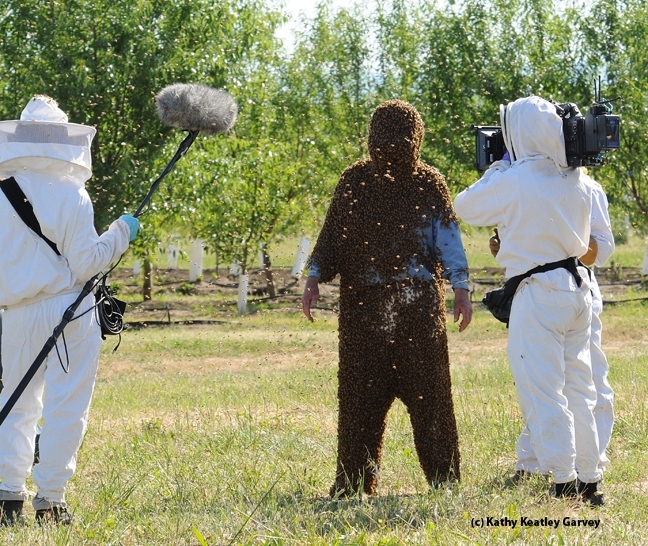
Former professional bee wrangler Norm Gary getting ready for a documentary in 2010. (Photo by Kathy Keatley Garvey)
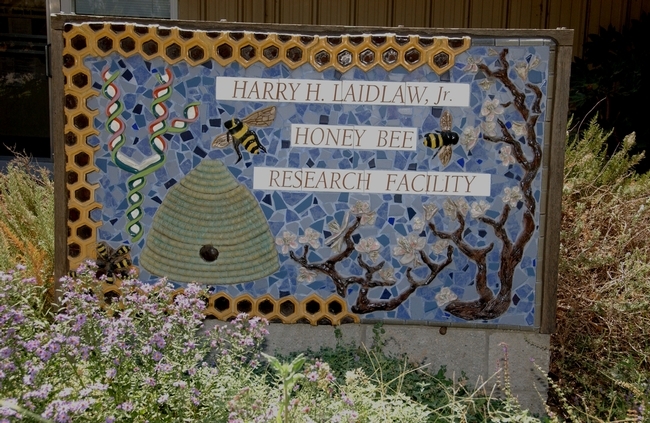
This is the sign in front of the Harry H. Laidlaw Jr. Honey Bee Research Facility on Bee Biology Road, UC Davis. It once doubled as a bee hive; Laidlaw treated his arthritis with some of the bee venom. (Photo by Kathy Keatley Garvey)
WSU Video with UC Davis Connections: Selecting Methods for Honey Bee Breeding
If you're a beekeeper or scientist and want to know more about bee breeding, you should access the newly produced video, "Selecting Methods for Honey Bee Breeding." It's the work of Washington State University's Honey Bee Research Program, College of...
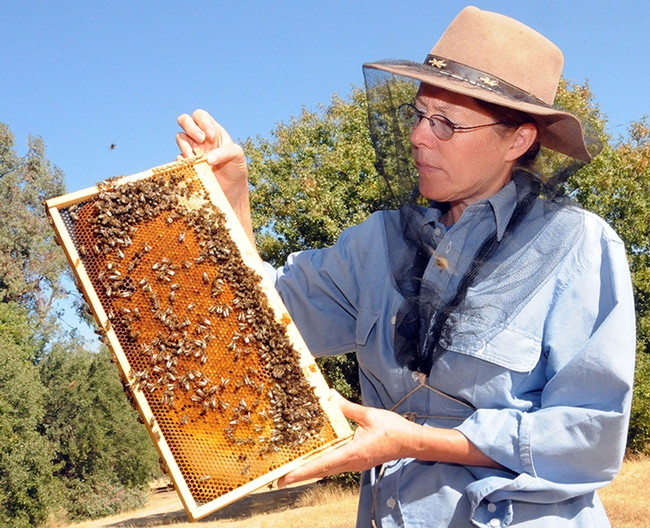
Bee breeder-geneticist Susan Cobey of WSU, former of UC Davis, with a frame at the Harry H. Laidlaw Jr. Honey Bee Research Facility. (Photo by Kathy Keatley Garvey)
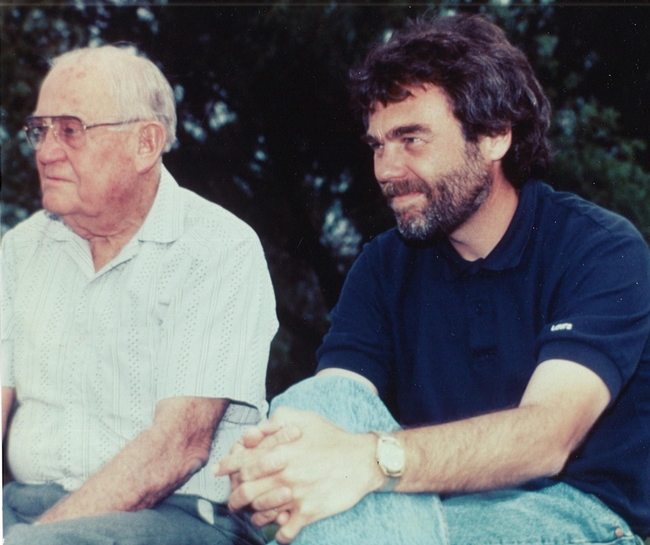
Harry H. Laidlaw Jr., (left) father of honey bee genetics, with graduate student and later colleague Robert E. Page Jr.
A Grand Opening--And Bees Were Nowhere in Sight
It was a grand opening of the USDA-ARS bee research facility at the University of California, Davis, but the bees were nowhere in sight. That's because bees don't fly until the temperature hits around 55, and the thermometer on that wintry day (Jan. 7)...
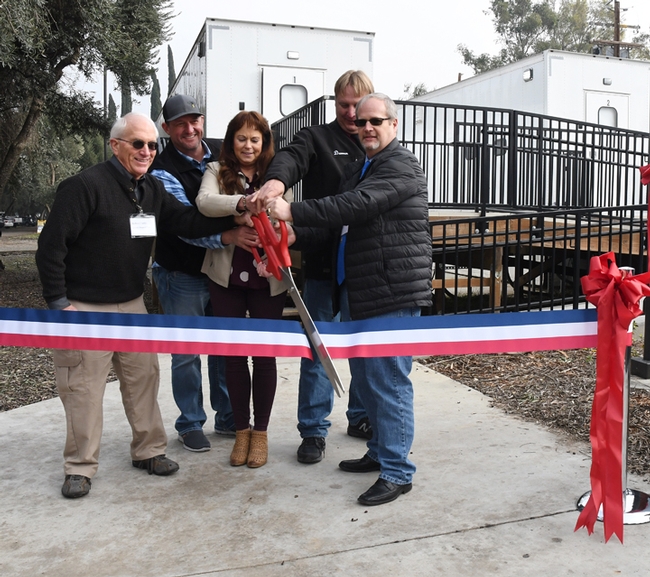
Ready to cut the ribbon (from left) are almond pollination consultant Robert Curtis of Carmichael, retired director of agricultural affairs, Almond Board of California; Brad Pankratz of Can-Am Apiaries, Orland; Jackie Parks-Burris of Jackie Park-Burris Queen Bees, Palo Cedro and a past president of California State Beekeepers' Association; Darren Cox, Logan, Utah, past president of American Honey Producers; and Kelvin Adee of Bruce, S.D., president of American Honey Producers.
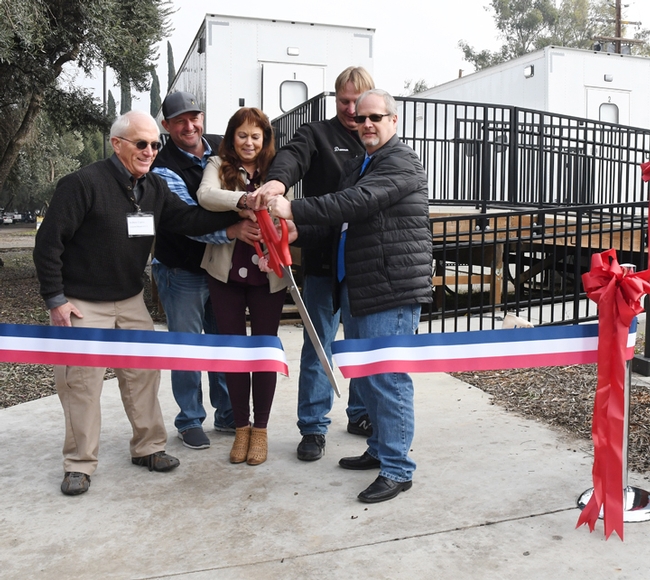
And it's snipped! From left are almond pollination consultant Robert Curtis of Carmichael, retired director of agricultural affairs, Almond Board of California; Brad Pankratz of Can-Am Apiaries, Orland; Jackie Parks-Burris of Jackie Park-Burris Queen Bees, Palo Cedro and a past president of California State Beekeepers' Association; Darren Cox, Logan, Utah, past president of American Honey Producers; and Kelvin Adee of Bruce, S.D., president of American Honey Producers.
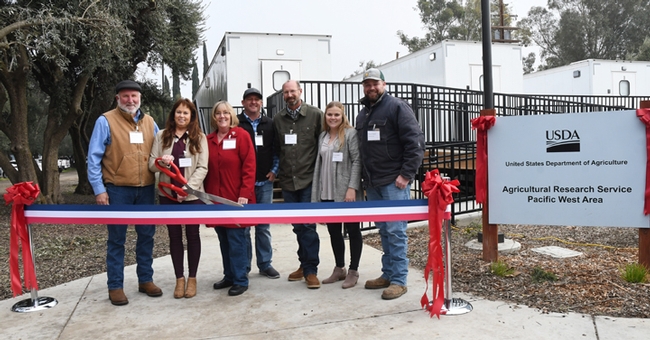
California State Beekeepers' Association members pose for a photo. From left are Steve Godlin, Jackie Park-Burris, Valeri Severson, Brad Pankratz, Buzz Landon, Brooke Palmer, and Trevor Tauzer.
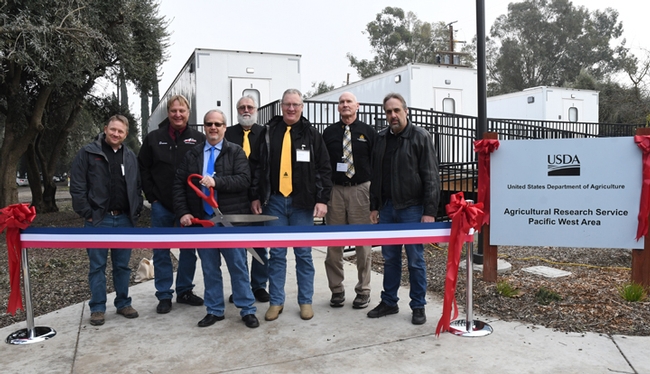
The American Honey Producers Association with the ribbon. Wielding the scissors is Kelvin Adee of Bruce, S.D., president of American Honey Producers. The group later held a conference in Sacramento.
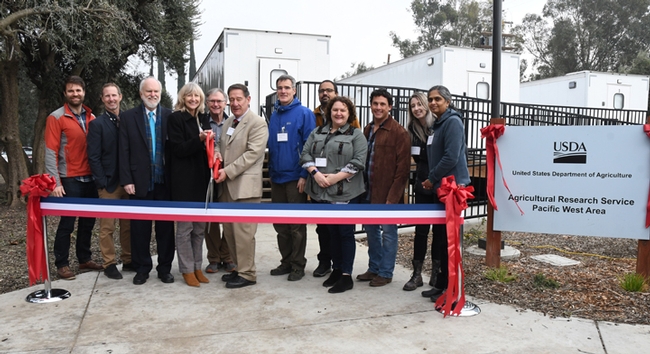
UC Davis-affiliated personnel pose with USDA personnel for a ribbon-cutting photo. From left are Charley Nye, UC Davis; Paul Pratt of USDA; Kevin Hackett of USDA; Anita Oberbauer of UC Davis; Eric Mussen of UC Davis; Robert Matteri of USDA; Neal Williams, Brian Johnson, Elina Niño and Bernardo Niño, all of UC Davis; and Julia Fine and Arathi Seshadri, USDA.
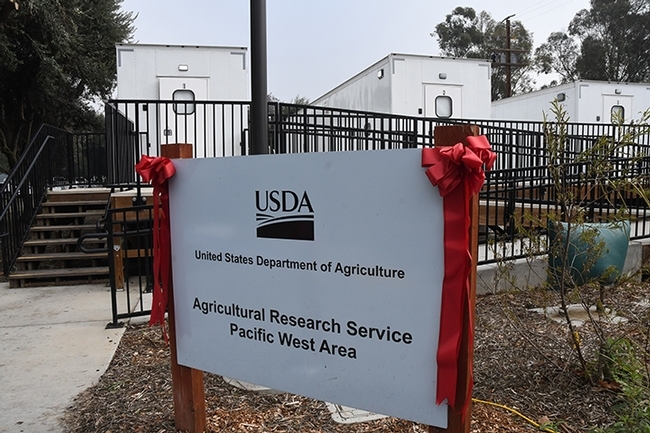
Much collaboration, cooperation, and camaraderie is expected here at the newly opened USDA-ARS bee research facility on Bee Biology Road, UC Davis.
Meet the President of the American Honey Producers
January is cold in Bruce, S.D., where the average nighttime temperature dips to 3 degrees. Beekeeper Kelvin Adee, who hails from Bruce, isn't experiencing any of that right now. He's in California--and so are his bees for the almond pollination...
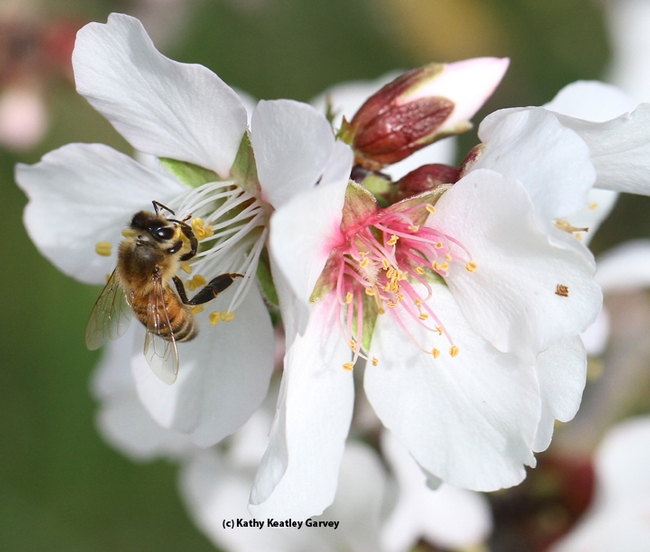
Beekeepers are gearing up for the California almond polination season, which usually starts around Feb. 14. Here, in this file photo, an industrious bee forages on an almond blossom. (Photo by Kathy Keatley Garvey)
UC Davis Wax-Working Class Sold Out, But Another One Planned Next Spring
If you missed enrolling in the “Wax Working, Honey and Hive Products,” a first-of-its-kind class offered Saturday, Dec. 7 by the Elina Niño lab at the University of California, Davis, you're in luck--but not until spring. The...
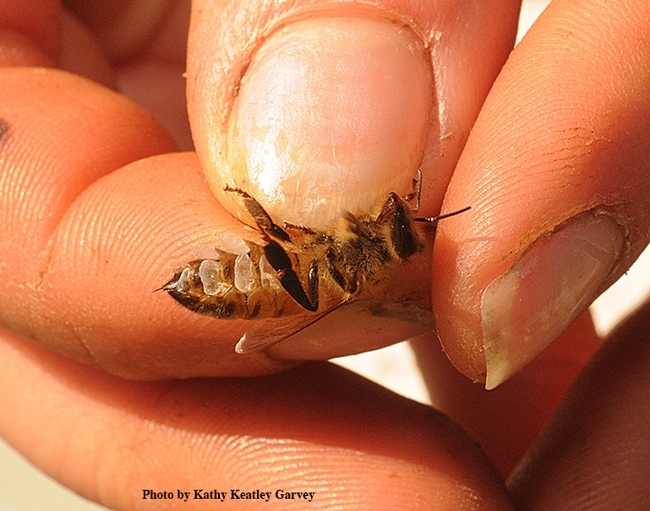
The wax-working glands of a honey bee. (Photo by Kathy Keatley Garvey)
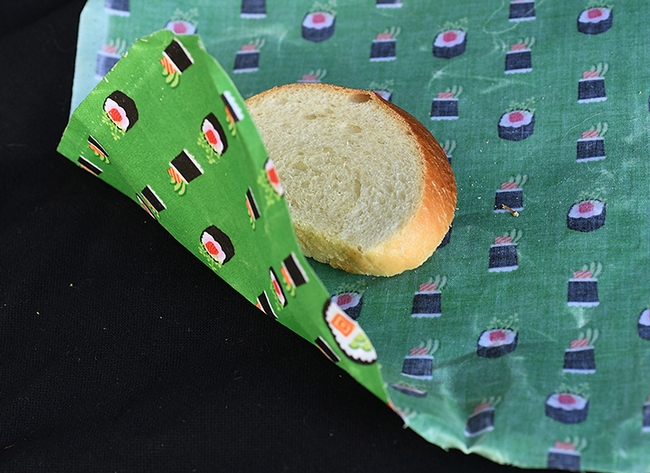
Reusable food wrappers--crafted with bees wax--are considered a better alternative than plastic wrap. This wrapper is the work of Teresa Hickman of Vacaville (handmadebyTeresa, Facebook page) who offers these at farmers' markets, festival and other venues in the area. (Photo by Kathy Keatley Garvey)

